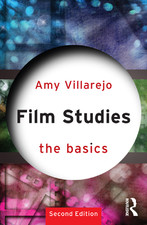Queer Film Blog-a-Thon: The Joy of Life
 The Joy of Life is not just the title of the movie I am reviewing for QTA's Queer Film Blog-a-Thon: it also names the sensation I feel whenever I'm watching a queer film (even, in most cases, a bad one) or writing about queer films or reading about them or just thinking about them and appreciating that they exist.
The Joy of Life is not just the title of the movie I am reviewing for QTA's Queer Film Blog-a-Thon: it also names the sensation I feel whenever I'm watching a queer film (even, in most cases, a bad one) or writing about queer films or reading about them or just thinking about them and appreciating that they exist.Queer movies are the most important things in my life that aren't people. They are better than food, way better than drink. For me, they rank right up there with shelter and oxygen. I applied to graduate school so that I could write about them, and I devoted my entire Ph.D. dissertation to queer cinema: an ecstatic pleasure in itself, at least insofar far as "ecstatic pleasure" is the right framing concept for dissertation writing, but also a rare case of actually realizing a clear goal without wavering, after seven years of work. That's how much devotion and renewable wonderment they inspire in me.
I teach courses in queer cinema, around seminar tables and more recently in lecture halls, and many of my most delirious moments of professional joy come from the fresh discoveries of revisiting these movies, and from the ardent and sometimes unexpected enthusiasm—and even, just as much, the frustration and bewilderment and intellectual calisthenics—that these movies inspire in my students. I love that queer movies, truly queer movies, invite the viewer to delectate in style and aesthetics while simultaneously demanding intellectual engagement and exercise. Just like my favorite people, my favorite queer movies are smart and fun, and they never stop surprising.
Anyone in academia has surely had his or her moments of worrying about the potential gulf between scholarly theorizing and everyday life, and another reason I treasure queer cinema is not only that they bridge this gulf, but that they do so by insisting on the overlaps and contradictions and seductive connections between the scholarly and the everyday, instead of diluting them so much that they can neutrally get along. Queer filmmakers were and are often the same people as queer activists, and queer theory and filmmaking have influenced and challenged each other more consistently and more explicitly than one finds in almost any other vein of contemporary cinema, especially the commercial cinema. You don't get Velvet Goldmine or Boys Don't Cry or Brother to Brother or Swoon without Michel Foucault or David Halperin or Kobena Mercer or Judith Butler, but you also don't get, say, Judith Butler without Paris Is Burning—a film that almost single-handedly clarified her field-defining arguments between Gender Trouble and Bodies That Matter but also highlighted the continued controversy and ideological aporia within her own thinking.
 And I love that there are always more queer movies around than we think. Well beyond the greatest hits that we all think of quickly, "queer" cuts so deep and wide as a concept, in such brilliantly category-shifting fashion, that seemingly "straight" movies, "classic" movies, even "weird" movies can turn out to be queer. Also, sexual daring and erotic insight and intellectual vitality are really inexpensive as far as filmmaking assets go, so queer cinema drives as much energy from local, university, amateur, and do-it-yourself filmmaking as it does from big crews with (comparably) big budgets. To celebrate that legacy of new talents and exciting discoveries, I wrote my review for this Blog-a-Thon about Jenni Olson's The Joy of Life, a movie that's still working out the kinks and limits of a distinctive and promising approach to form, but well worth a rental and a rah-rah for future work by this director.
And I love that there are always more queer movies around than we think. Well beyond the greatest hits that we all think of quickly, "queer" cuts so deep and wide as a concept, in such brilliantly category-shifting fashion, that seemingly "straight" movies, "classic" movies, even "weird" movies can turn out to be queer. Also, sexual daring and erotic insight and intellectual vitality are really inexpensive as far as filmmaking assets go, so queer cinema drives as much energy from local, university, amateur, and do-it-yourself filmmaking as it does from big crews with (comparably) big budgets. To celebrate that legacy of new talents and exciting discoveries, I wrote my review for this Blog-a-Thon about Jenni Olson's The Joy of Life, a movie that's still working out the kinks and limits of a distinctive and promising approach to form, but well worth a rental and a rah-rah for future work by this director.Enjoy the rest of the Blog-a-Thon (I confess that ModFab's piece is already a favorite for me), thank Queering the Apparatus for hosting it, and thank all the queer films and filmmakers in this universe for giving us so much to love and reconsider and be inspired or angry or gleeful or mournful or informed or enlightened or troubled by.
Labels: Blog Buddies, Blog-a-thons, Queer Cinema

















0 Comments:
Post a Comment
<< Home